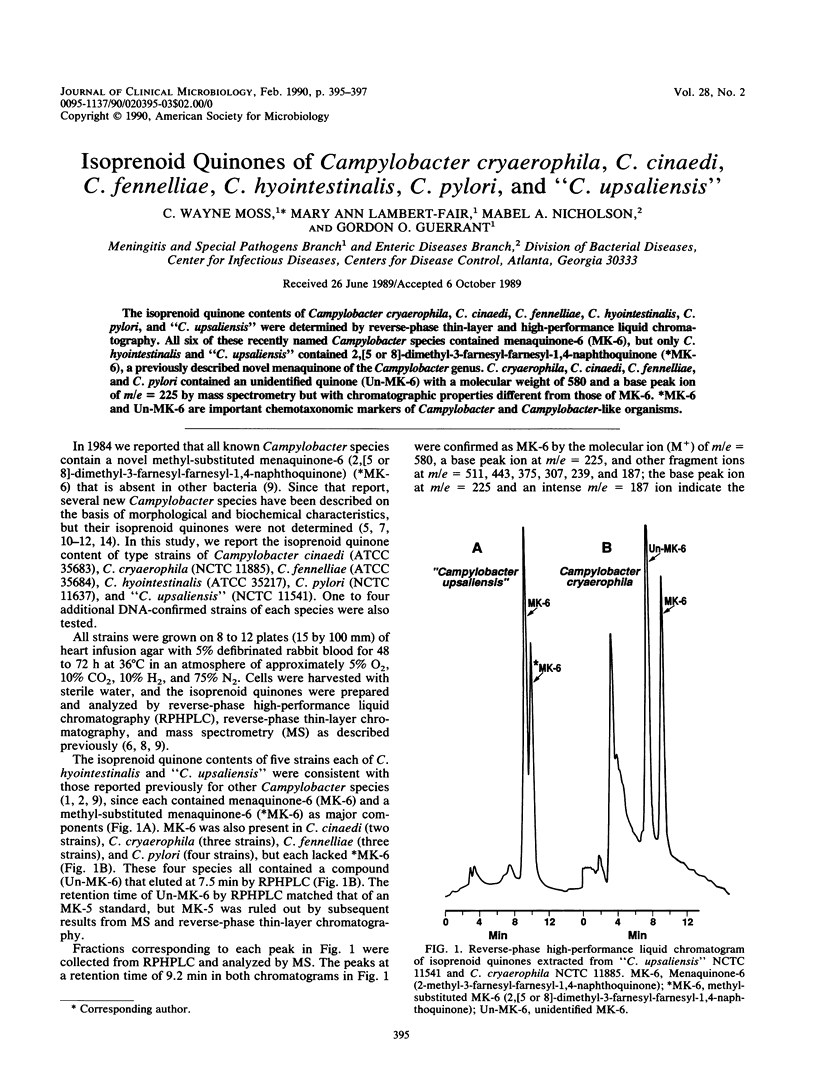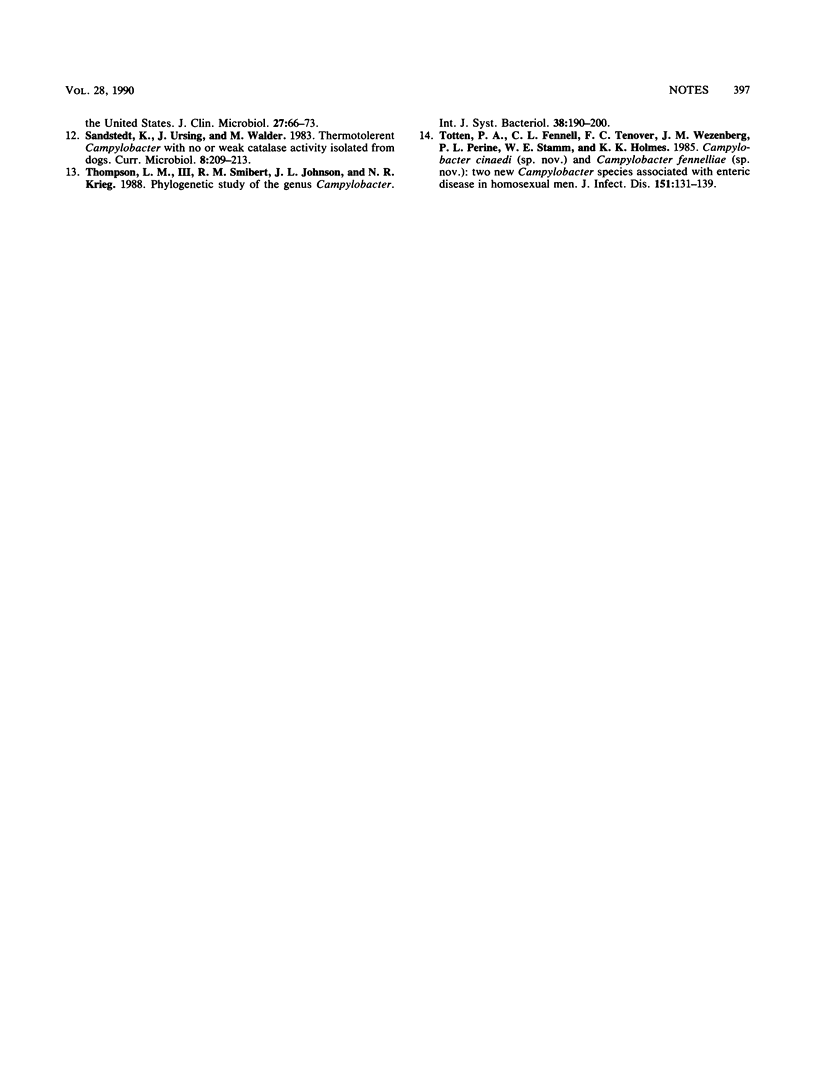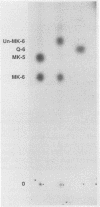Abstract
The isoprenoid quinone contents of Campylobacter cryaerophila, C. cinaedi, C. fennelliae, C. hyointestinalis, C. pylori, and "C. upsaliensis" were determined by reverse-phase thin-layer and high-performance liquid chromatography. All six of these recently named Campylobacter species contained menaquinone-6 (MK-6), but only C. hyointestinalis and "C. upsaliensis" contained 2,[5 or 8]-dimethyl-3-farnesyl-farnesyl-1,4-naphthoquinone (*MK-6), a previously described novel menaquinone of the Campylobacter genus. C. cryaerophila, C. cinaedi, C. fennelliae, and C. pylori contained an unidentified quinone (Un-MK-6) with a molecular weight of 580 and a base peak ion of m/e = 225 by mass spectrometry but with chromatographic properties different from those of MK-6. *MK-6 and Un-MK-6 are important chemotaxonomic markers of Campylobacter and Campylobacter-like organisms.
Full text
PDF


Images in this article
Selected References
These references are in PubMed. This may not be the complete list of references from this article.
- Carlone G. M., Anet F. A. Detection of menaquinone-6 and a novel methyl-substituted menaquinone-6 in Campylobacter jejuni and Campylobacter fetus subsp. fetus. J Gen Microbiol. 1983 Nov;129(11):3385–3393. doi: 10.1099/00221287-129-11-3385. [DOI] [PubMed] [Google Scholar]
- Collins M. D., Costas M., Owen R. J. Isoprenoid quinone composition of representatives of the genus Campylobacter. Arch Microbiol. 1984 Feb;137(2):168–170. doi: 10.1007/BF00414461. [DOI] [PubMed] [Google Scholar]
- Collins M. D., Jones D. Distribution of isoprenoid quinone structural types in bacteria and their taxonomic implication. Microbiol Rev. 1981 Jun;45(2):316–354. doi: 10.1128/mr.45.2.316-354.1981. [DOI] [PMC free article] [PubMed] [Google Scholar]
- Gebhart C. J., Edmonds P., Ward G. E., Kurtz H. J., Brenner D. J. "Campylobacter hyointestinalis" sp. nov.: a new species of Campylobacter found in the intestines of pigs and other animals. J Clin Microbiol. 1985 May;21(5):715–720. doi: 10.1128/jcm.21.5.715-720.1985. [DOI] [PMC free article] [PubMed] [Google Scholar]
- Karr D. E., Bibb W. F., Moss C. W. Isoprenoid quinones of the genus Legionella. J Clin Microbiol. 1982 Jun;15(6):1044–1048. doi: 10.1128/jcm.15.6.1044-1048.1982. [DOI] [PMC free article] [PubMed] [Google Scholar]
- Moss C. W., Guerrant G. O. Separation of bacterial ubiquinones by reverse-phase high-pressure liquid chromatography. J Clin Microbiol. 1983 Jul;18(1):15–17. doi: 10.1128/jcm.18.1.15-17.1983. [DOI] [PMC free article] [PubMed] [Google Scholar]
- Moss C. W., Kai A., Lambert M. A., Patton C. Isoprenoid quinone content and cellular fatty acid composition of Campylobacter species. J Clin Microbiol. 1984 Jun;19(6):772–776. doi: 10.1128/jcm.19.6.772-776.1984. [DOI] [PMC free article] [PubMed] [Google Scholar]
- Patton C. M., Shaffer N., Edmonds P., Barrett T. J., Lambert M. A., Baker C., Perlman D. M., Brenner D. J. Human disease associated with "Campylobacter upsaliensis" (catalase-negative or weakly positive Campylobacter species) in the United States. J Clin Microbiol. 1989 Jan;27(1):66–73. doi: 10.1128/jcm.27.1.66-73.1989. [DOI] [PMC free article] [PubMed] [Google Scholar]
- Totten P. A., Fennell C. L., Tenover F. C., Wezenberg J. M., Perine P. L., Stamm W. E., Holmes K. K. Campylobacter cinaedi (sp. nov.) and Campylobacter fennelliae (sp. nov.): two new Campylobacter species associated with enteric disease in homosexual men. J Infect Dis. 1985 Jan;151(1):131–139. doi: 10.1093/infdis/151.1.131. [DOI] [PubMed] [Google Scholar]



